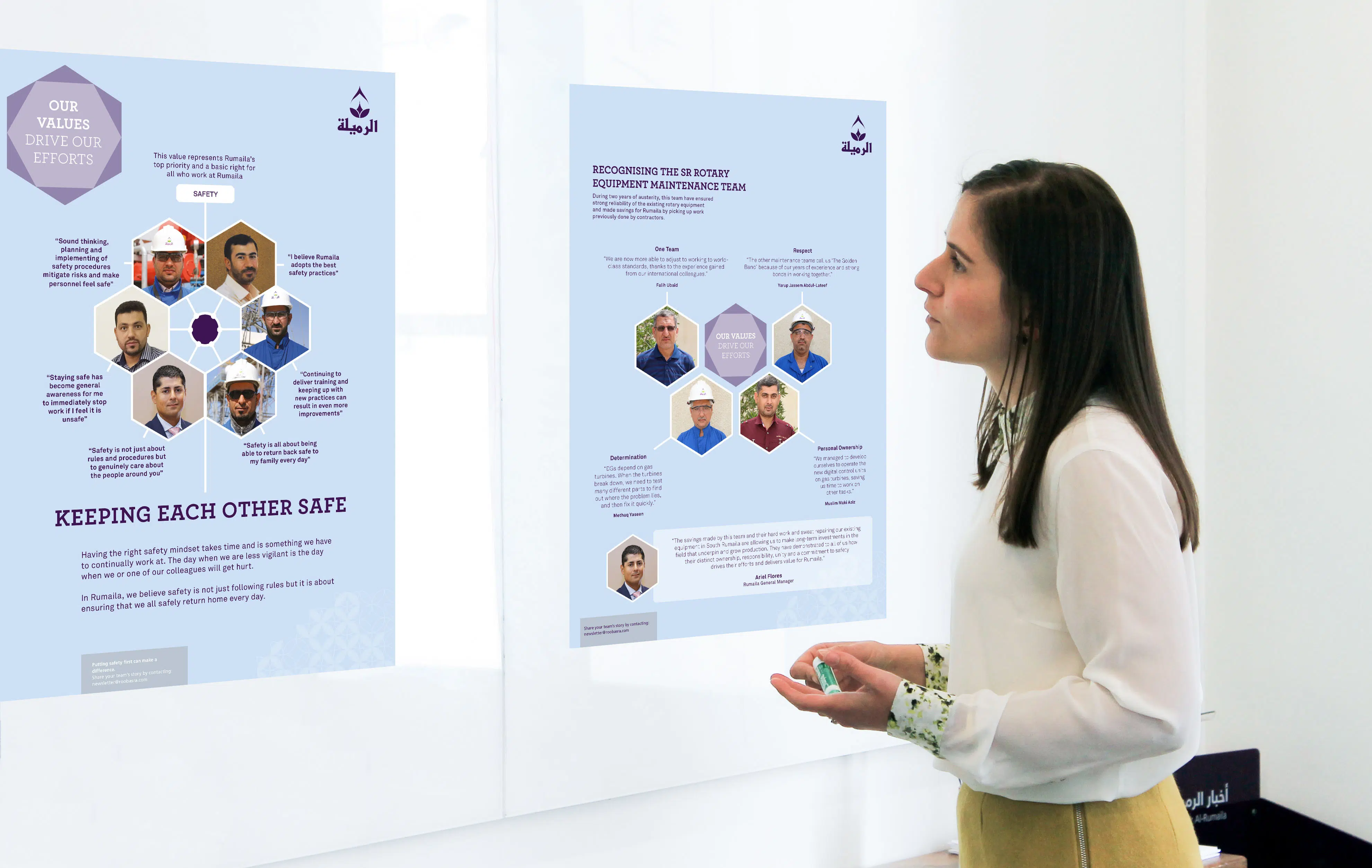
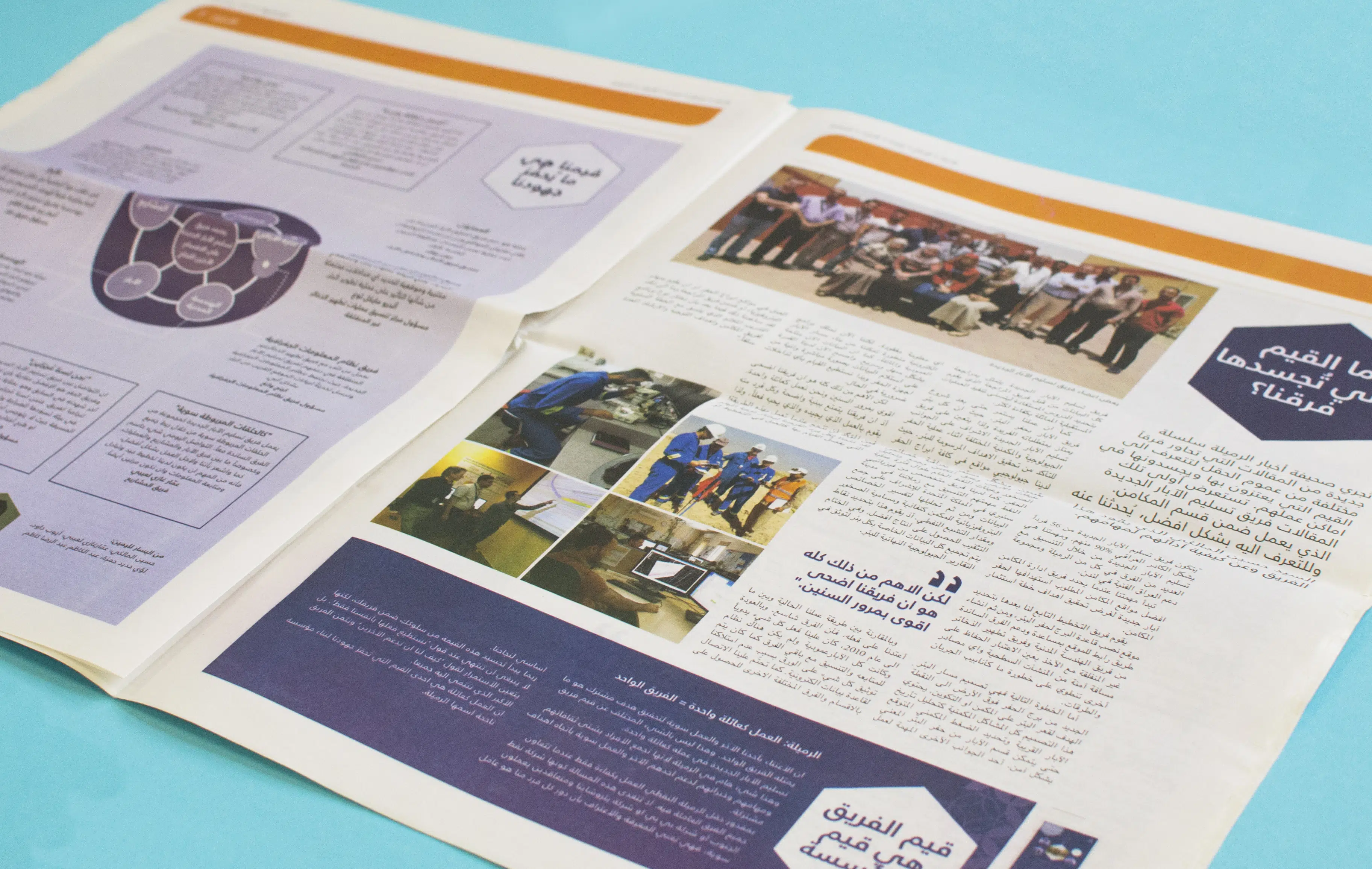
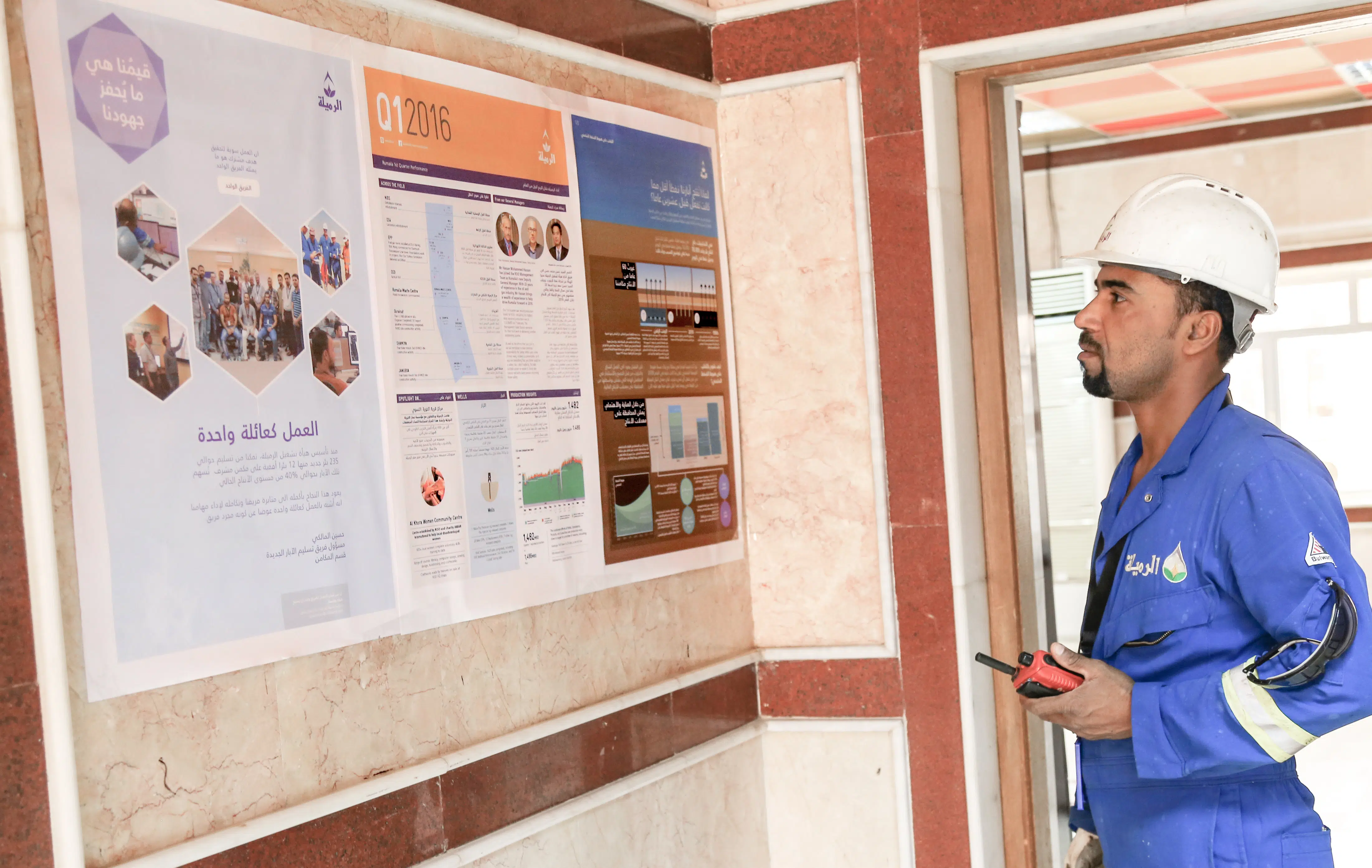
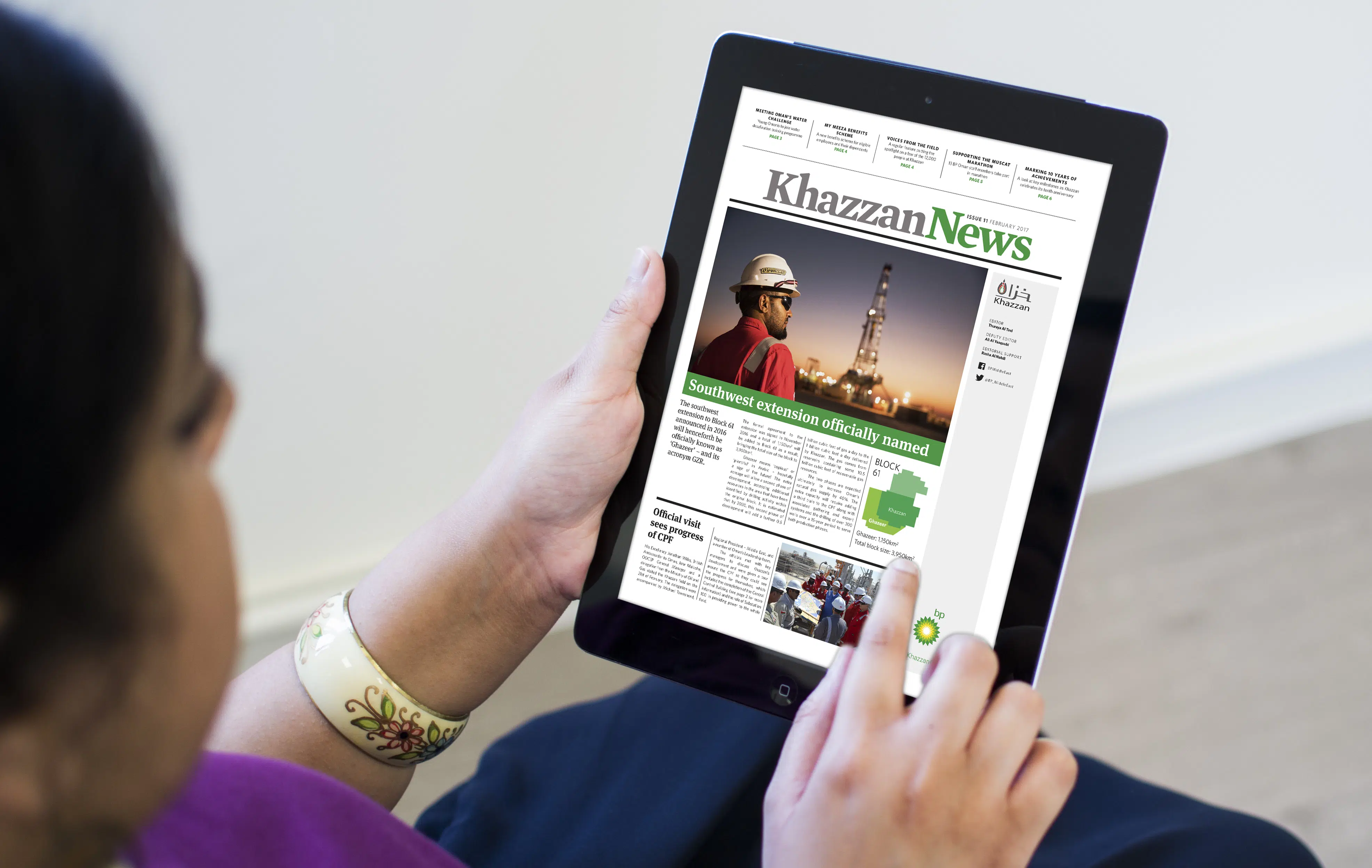
Challenge
One of the largest oilfields in the world (Rumaila, southern Iraq) had undergone decades of neglect and underinvestment before BP and PetroChina were brought in by Iraq’s Basra Oil Company to help re-generate the field.
Our challenge was to help bring together three distinctly different cultures as one team and to build a unique corporate culture which supports their ambitious production and safety targets.
Insight
We identified that everyone involved was united behind a common purpose: to help rebuild Iraq. No matter whether staff came from Basra, Birmingham or Beijing, there was a strong desire to do more than just increase oil production. It was essential to tap into this mutually shared interest; identify common values, and help people connect in a way that built real trust and support for each other.
We also recognised that a values initiative in a country like Iraq is not enough to generate the trust needed to build a highly motivated workforce. Working collaboratively with the C&EA Team on the ground, we recognised that core to building trust was the need for people out in the field to be recognised for going above and beyond.
Action
Through a series of face-to-face workshops, we identified a set of principles and values that would help guide behaviour. We tested, refined and gained buy-in from the leadership for this new way of operating. We called it ‘The Rumaila Way’. Central to its ethos is respect for each of the different cultures and beliefs.
This starts with recognising both individuals and teams for their efforts and innovative approach to making things happen. The values and recognition work now influences all communications from newspapers, social media, posters, facility screens, town halls and leadership site visits.






